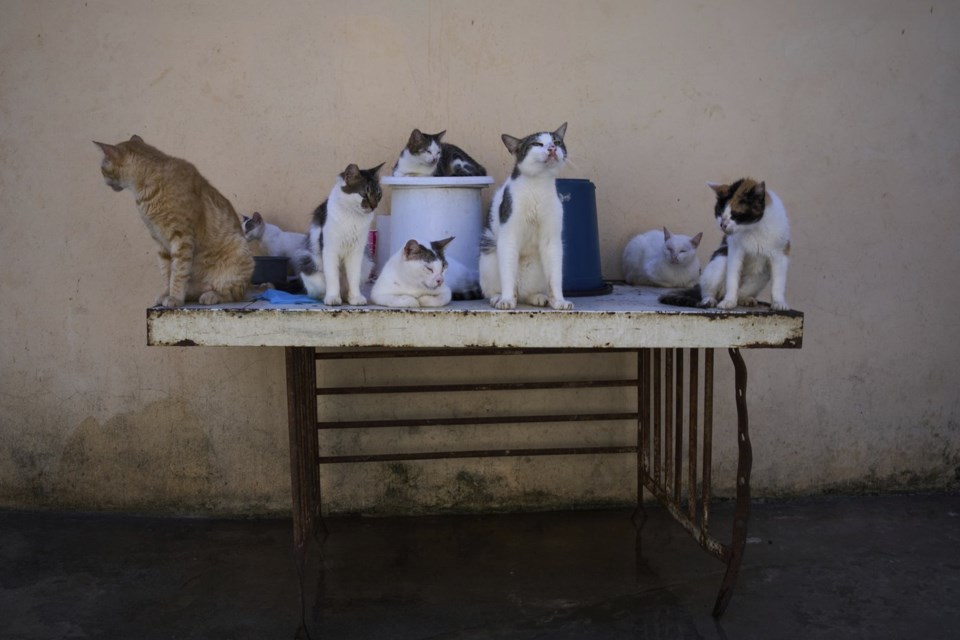HAVANA (AP) — Every afternoon, 81-year-old Nélida Pérez begins her familiar walk down the cobblestone streets of Old Havana, a procession of hungry cats trailing close behind her.
For years, Pérez has taken it upon herself to feed some of the street cats that roam this part of town, which is also one of the most popular tourist spots in the Cuban capital. She once relied on her own food or restaurant donations, but as the island’s economic situation worsened and tourism declined, it has become increasingly difficult to provide for them.
“I have never in my life asked anyone for a plate of food to feed my cats," Pérez told The Associated Press. "Now I see myself in difficulties because there is no tourism and there is an economic crisis.”
Since 2020, Cuba has faced a worsening economic crisis, driven by COVID-19 shutdowns, stricter U.S. sanctions, and an internal monetary reform that triggered inflation.
Although the government provides vaccines, sterilization and some free clinics, it does not have the means to provide shelter and food for street cats and dogs. While official data is unavailable, activists say that many pet lovers have turned their homes — even small apartments — into shelters, but they are struggling to keep up with the demand and provide adequate care.
“The streets will kill them,” said Bárbara Iglesias, a 51-year-old pharmacist who adopted five dogs and has rescued and found homes for a dozen others. Iglesias explained that the hardest part is getting food. A 20-kilo (44-pound) bag of dog food, which lasts one dog for about 45 days, costs around $80 — a sum that is out of reach for most. This forces people to feed animals with pig organ meat (offal), chicken parts or mince meat — which are also not easy to obtain.
On top of that, annual vaccines cost about $20 and a vet visit is another $10, all while the average monthly salary on the island is only about $12.
Experts say that the abandonment of animals in Cuba is a result of several factors, including rising food and medicine prices, the migration of hundreds of thousands of Cubans in the last five years, and a high mortality rate among older adults.
“People are more focused on their problems, which are numerous: Cubans don’t have water, they don’t have electricity, and getting food is becoming increasingly difficult,” said Annelie González, one of the leaders of the Aldameros Project, a cat colony located in a park in Havana’s historic center.
“Having an animal in your care involves feeding and caring,” said González, 36, who works as a restaurant manager and spends much of her income on the cats.
She and a small group of volunteers began feeding 15 cats in Aldameros Park at the beginning of the pandemic. Today, they care for more than 150. Over the years, through their own efforts and some donations, they were able to install water pumps, pens for special cases, and cages for the kittens.
González points to a number that she said reveals the shocking scale of the problem: at the start of the decade, roughly three abandoned cats appeared in the park each week. This year, that figure has soared to 15 per day.
Back in Old Havana, Pérez recounts with sadness how she has seen people mistreat, beat and even kill stray cats.
“As long as I’m alive and healthy, and people help me,” she vowed, “I’ll always find them something to eat."
____
Follow AP’s coverage of Latin America and the Caribbean at https://apnews.com/hub/latin-america
Andrea Rodríguez And Cristiana Mesquita, The Associated Press



